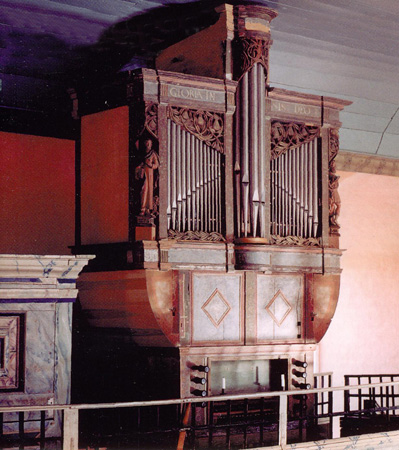


Morlanda (Drust Island)

Built for Marstrand, probably by Hans Brebos 1604, modified by Elias Wittig in 1715
State pf preservation: Repairs and enhancements in 1734, 1784-86; transfered to Morlanda1804. Restored in 1952 by Nils Hammarberg and 1999-2001 by Mats Arvidsson and Endre Kerekes (GOArt).
Music sample:
G. Böhm : Variationen über Ach wie nichtig, ach wie flüchtig. Variation 1
played by Hans Davidsson
The Morlanda organ is one of the oldest still playable in Scandinavia. Its very small size saved it from the many modernising ideas of later centuries. The oldest stops form a nucleus of 8’, 4’, 2’ and (parts of rank Rör Flögt/chimney flute) 1’. The stops of 1715 probably enhanced this nucleus with alternatives (Principal 4’ to Flögt 4’; Gemshorn 2’ to Octava 2’), fifths/compound stops (Qvinta 3’ and Sesqvialtera 2f.) and a fundament (Principal 8’, treble only because of lack of space). So the two essential building periods of the instrument represent the organic growth of an instrument over the centuries.
© Greifenberger Institut für Musikinstrumentenkunde | info@greifenberger-institut.de



